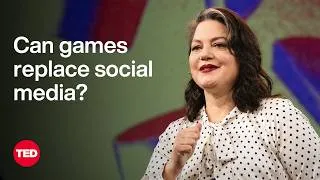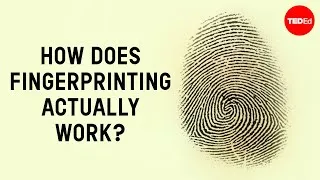请双击下面的英文字幕来播放视频。
翻译人员: Grace Man
校对人员: Yip Yan Yeung
00:06
While most people wouldn’t consider
the crusty exterior of an oyster
0
6878
3753
尽管大多数人并不觉得
牡蛎坚硬的外壳特别美丽,
00:10
to be particularly beautiful,
1
10631
1794
00:12
opening up this craggy case might reveal
an exquisite jewel nestled within.
2
12675
5672
可是打开这凹凸不平的外壳,
可能会收获
一枚镶嵌在其中的精美珍珠。
00:18
Yet, despite their iridescent colors
and smooth shapes,
3
18973
3670
珍珠光彩夺目,形状光滑,
00:22
pearls are actually made
of the exact same material
4
22643
3712
但其实它与周围贝壳的
化学成分完全相同。
00:26
as the shell that surrounds them.
5
26355
1877
00:28
Pearls, urchin spines, the shells
of mussels, snails and clams, even coral—
6
28566
5464
珍珠、海胆刺、贻贝的贝壳、
海螺和蛤蜊,甚至是珊瑚——
00:34
all these structures are made
out of the same chemical compound:
7
34030
4337
这些都是由相同的
化合物构成的:碳酸钙。
00:38
calcium carbonate.
8
38367
1919
00:40
So, how does this single ingredient form
such a vast array of materials?
9
40745
6006
那么,为什么这种单一的成分
可以组成如此种类繁多的物质呢?
00:47
Calcium carbonate, or CaCO3,
is common on land,
10
47919
4045
碳酸钙,也叫做 CaCO3,
在陆地上很常见,
00:51
and even more bountiful in the sea.
11
51964
2419
而在海洋中还要更加丰富。
00:54
The Earth’s crust is rich in calcium,
12
54550
2586
地壳当中富含钙质,
00:57
and over millennia these deposits
have seeped into rivers and oceans.
13
57136
4713
数千年来,这些沉积物渗透至
河流与海洋当中,
01:02
This is especially true
near hydrothermal vents,
14
62266
3045
海底热泉附近尤甚,
01:05
where hot seawater mingles
with calcium rich basalts.
15
65311
4213
在这里,热泉海水与
富含钙质的玄武岩混合。
01:10
Meanwhile, when carbon dioxide in the air
interacts with seawater
16
70024
4088
同时,空气中的二氧化碳
与海水发生化学反应,
01:14
it eventually produces
dissolved carbonate.
17
74112
3003
最终生成溶解性碳酸盐。
01:17
Every year, the ocean absorbs roughly
one third of our carbon dioxide emissions,
18
77490
5839
海洋每年吸收了人类排放
二氧化碳总量的约 1/3 左右,
01:23
adding huge quantities of carbonate
into the water.
19
83329
3796
并生成大量碳酸盐进入海水中。
01:27
It’s no surprise that sea creatures have
made use of these abundant compounds,
20
87834
4879
海洋生物会利用这些产量丰富的
化合物,这并不令人惊讶。
01:32
but the way calcium and carbonate are
woven together into various shapes
21
92713
4422
不过,钙和碳酸盐交织出
不同形态物质的过程,
01:37
is surprisingly artful.
22
97135
2168
却充满令人讶异的艺术性。
01:39
Let’s return to the humble oyster.
23
99846
2419
回到看似不起眼的牡蛎。
01:42
Like many aquatic mollusks,
oysters start life as exposed larvae,
24
102431
5172
与很多水生软体动物相同,
牡蛎的生命起始于暴露在外的幼体,
01:47
and quickly get to work building
a protective shell.
25
107687
3170
然后迅速形成保护壳。
01:51
First, an organ called the mantle secretes
an organic matrix
26
111065
3837
首先,一个叫做外套膜的组织
01:54
of proteins and other molecules
to construct a scaffold.
27
114902
3629
分泌有机基质蛋白质与
其他分子来搭建支架。
01:58
Then, the oyster filters the seawater,
28
118865
2460
然后,牡蛎过滤海水,
02:01
drawing out calcium and carbonate to
combine them into its building material.
29
121325
4755
取出其中的钙和碳酸盐,将它们
组合成保护壳的构成物质。
02:06
It lays this material over the scaffold,
30
126664
2419
它将这些物质置于支架之上,
02:09
which is covered in charged proteins
that attract and guide
31
129083
3670
支架被带有电荷的蛋白质覆盖,
用以吸收并引领
02:12
the calcium carbonate molecules
into layers.
32
132753
2837
碳酸钙分子形成分层。
02:16
The specific arrangement of these protein
scaffolds depends on the mollusk species
33
136257
4504
这些蛋白质支架的特定排列取决于
软体动物种类以及它们的环境,
02:20
and their environment,
34
140761
1377
02:22
accounting for their vast diversity
of shell shapes, sizes, and colors.
35
142138
5589
导致了贝壳形状、大小、
颜色的巨大多样性。
02:28
Mollusks carefully control all components
of their calcium carbonate creations—
36
148269
5589
软体动物仔细地控制着它们
碳酸钙作品当中的成分含量——
02:33
even manipulating CaCO3
at the molecular level.
37
153858
4004
甚至在分子级别上操控着 CaCO3。
02:38
Using special proteins,
38
158362
1585
使用特殊的蛋白质,
02:39
mollusks can produce
two crystal structures out of CaCO3:
39
159947
4630
软体动物可以生成
两种 CaCO3 结晶结构:
02:44
calcite and aragonite.
40
164577
2210
方解石与霰石。
02:47
Both of these compounds have
the same chemical composition,
41
167205
3169
这两种化合物具有
相同的化学成分,
02:50
but different qualities due to the way
their crystal lattices are arranged.
42
170374
4380
然而不同的晶体点阵排列
导致了它们拥有不同的特性。
02:55
Calcite is the more stable of the two
and less prone to dissolving over time,
43
175171
4838
在两者当中,方解石结构更稳定,
更不易随时间溶解,
03:00
so most mollusk shells have
a sturdy outer layer of calcite.
44
180009
4421
所以大部分软体动物
有着方解石的坚硬外壳。
03:04
As the slightly more soluble molecule,
45
184805
2461
相对来说,
霰石是更加可溶性的分子,
03:07
aragonite can better adapt
to more or less acidic environments.
46
187266
4338
能够更好地适应
或强或弱的酸性环境。
03:11
So most mollusk shells have
an interior layer of aragonite
47
191604
3754
所以大部分软体动物有着
霰石的贝壳内侧,
03:15
to maintain their internal pH level.
48
195358
2711
来维持内部的酸碱值。
03:18
But one form of aragonite is stronger
and more versatile than the rest:
49
198486
5172
但霰石的其中一种形态要比其他
所有的都强度更大、用途更广:
03:23
nacre.
50
203908
1001
珍珠母(nacre)。
03:25
Mollusks make this special material
by placing successive layers of aragonite
51
205368
4921
软体动物将霰石连续分层放置,
并在中间散布点缀蛋白质,
03:30
interspersed with proteins.
52
210289
2127
就得到了珍珠母这种特殊的物质。
03:32
These layers are stacked
like hexagonal bricks,
53
212583
3212
这些分层像六角形砖块一般堆叠,
03:35
each surrounded by other organic material
that directs their orientation.
54
215795
4880
每一块都被其他有机物包围,
来指引排列方向。
03:41
The uniform layering and brick-like
structure of nacre
55
221342
3378
统一的分层与砖块形状的结构是
03:44
is key to its signature iridescence.
56
224720
2962
珍珠母拥有其标志性
流光溢彩的彩虹色泽的关键。
03:47
The layers are similar in thickness
to the wavelength of visible light,
57
227848
3879
这些分层的厚度
与可见光的波长相似,
03:51
so the light reflecting
from its interior surface
58
231727
3254
所以珍珠母内表面反射出的光
03:54
interferes with the light reflecting
from the outer surface.
59
234981
3753
会和外表面反射的光产生
建设性或破坏性的干扰。
03:59
When particles of light strike the nacre,
60
239026
2836
当光粒子照射进珍珠母时,
04:01
they bounce around its multilayered
crystalline structure
61
241862
3546
它们会在多层次的
晶体结构当中来回反弹
04:05
in a cascade of shifting rainbows.
62
245408
3128
呈现出变化无穷的彩虹色彩。
04:08
But nacre isn’t just pretty—
63
248911
1835
但是,珍珠母不单单是漂亮——
04:10
it’s one of the strongest and lightest
biomaterials we know of.
64
250913
4088
它还是目前已知的
最坚硬且最轻的生物材料。
04:15
And it's not just oysters that produce it.
65
255251
2294
不只是牡蛎会产生这种材料。
04:17
In fact, numerous mollusk
species deploy nacre
66
257670
3462
事实上,众多软体动物种类都将
珍珠母作为它们的首要防御机制。
04:21
as one of their primary
defense mechanisms.
67
261132
2752
04:24
If an intruding parasite or even a stray
particle of sand irritates the mantle,
68
264135
5547
当有寄生生物或沙粒等
进入软体时,
04:29
the mollusk will coat the offender
in nacre-producing cells
69
269682
4087
软体动物会用珍珠母
产生的“囚室”困住入侵者,
04:33
to form what’s known as a pearl sac.
70
273769
3087
并形成珍珠囊。
04:37
These cells wrap the threat in layers
of proteins and aragonite
71
277106
4379
这些“囚室”裹挟着外来威胁物,
将它们锁在蛋白质与霰石的夹层里,
04:41
until eventually the cocoon
completely absorbs the invader—
72
281485
4421
直至最终夹层完全吸收了入侵者——
04:46
dissolving the threat into an opalescent
sphere of nacre.
73
286240
4630
将威胁物溶解成为
珍珠母乳白色的球体外表。
04:51
This defense mechanism is our leading
theory for mollusks making pearls;
74
291370
4797
这种防御机制就是
软体动物产生珍珠的主要理论;
04:56
transforming everyday intruders
into timeless treasures.
75
296167
4838
将每天的入侵者变为
永不过时的珍宝。
New videos
关于本网站
这个网站将向你介绍对学习英语有用的YouTube视频。你将看到来自世界各地的一流教师教授的英语课程。双击每个视频页面上显示的英文字幕,即可从那里播放视频。字幕会随着视频的播放而同步滚动。如果你有任何意见或要求,请使用此联系表与我们联系。







